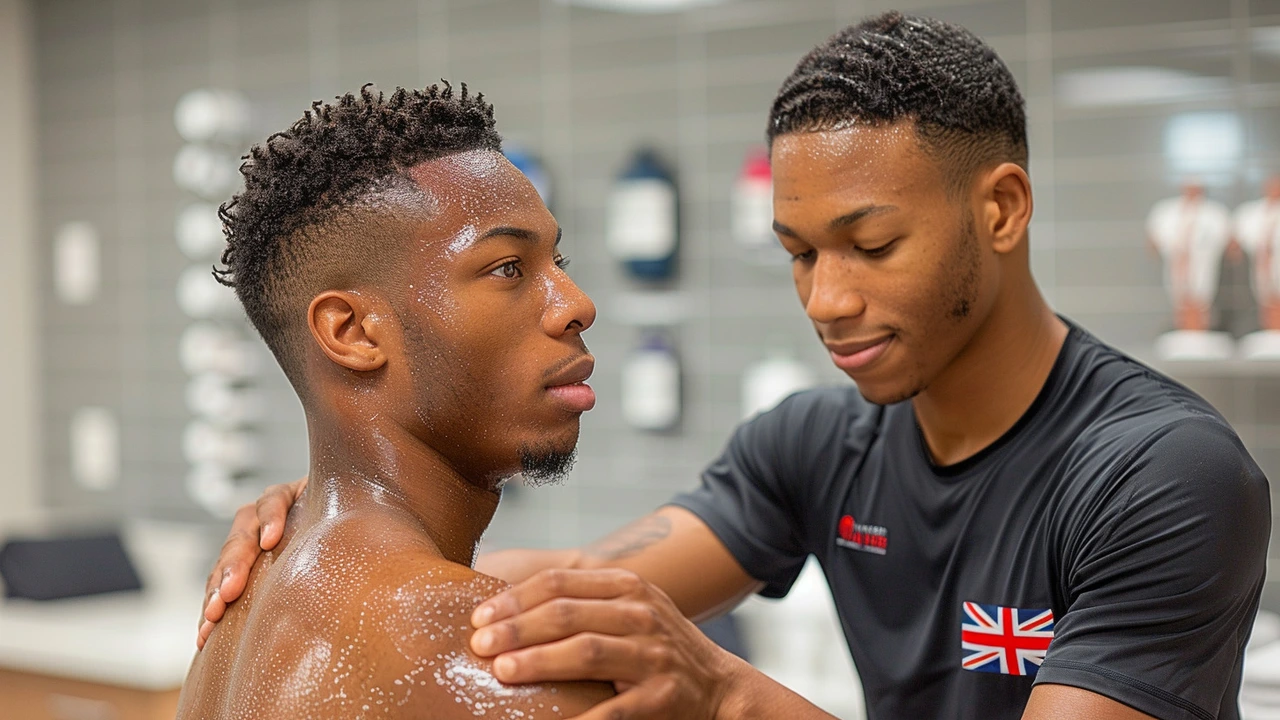Introduction to Sports Massage
Sports massage, more than just a tool for relaxation, serves as a pivotal element in an athlete's recovery and performance enhancement strategy. It's a specialized form of massage that focuses on optimizing muscle function, reducing recovery time, and preventing injuries. Its roots can be traced back to ancient times, where civilizations like the Greeks and Romans used massage as a treatment for their athletes. Today, it's backed by science and endorsed by top professionals across various sports disciplines, highlighting its undeniable benefits. My own journey into understanding the magic of sports massage began amidst the bustling lifestyle of Melbourne, balancing the excitement of fatherhood with Lucas and Ava, and my passion for staying active.
The Science Behind Sports Massage
At its core, sports massage works by manipulating the body's soft tissues, targeting muscles, tendons, and ligaments to promote flexibility and alleviate muscle tension. The techniques used are specifically designed to increase blood flow and lymphatic fluid movement, facilitating the removal of waste products from muscle metabolism and introducing fresh oxygen and nutrients. This process is crucial for repairing micro-tears that occur in muscle fibers during intense physical activities. Furthermore,
“Sports massage stimulates the parasympathetic nervous system, helping the body enter a rest and recovery phase,hence accelerating the healing process,” according to recent athletic health publications.
Benefits of Sports Massage for Athletes
The list of benefits sports massage offers to athletes is formidable. From enhancing performance by improving flexibility and range of motion, reducing muscle soreness and fatigue, to speeding up the recovery process post-training or competition. It also plays a significant role in injury prevention. Regular sports massages can identify tender areas that might be potential injury sites before they develop into more severe issues. This preventive aspect cannot be overstated, as staying injury-free is paramount for any athlete's career longevity and success. Moreover, beyond the physical benefits, sports massage also aids in mental well-being, reducing stress and anxiety levels, and improving sleep quality, which in turn, enhances overall performance.
Types of Techniques Used in Sports Massage
Sports massage incorporates a variety of techniques based on the athlete's specific needs and the demands of their sport. Some of the most common techniques include Swedish massage, which uses long strokes to promote blood flow; deep tissue massage, targeting deeper muscle layers and connective tissues; trigger point therapy, focusing on specific points of muscle tension; and myofascial release, aimed at releasing tension in the fascia. Each technique has its purpose, whether it's to warm up muscles before an event, aid in recovery post-activity, or maintain flexibility and mobility during training periods.
How to Integrate Sports Massage into an Athletic Routine
Incorporating sports massage into an athletic routine doesn't have to be complicated. The key is to align massage sessions with training intensity and competition schedules. For example, a lighter, more relaxing massage is beneficial after intense training days or competitions to facilitate recovery, while deeper, more targeted massage techniques can be more effective during lighter training periods to address any muscle imbalances or tightness. It's also important to work with a qualified sports massage therapist who understands the dynamics of various sports and can tailor their approach accordingly.
Choosing the Right Sports Massage Therapist
Finding the right sports massage therapist is crucial for reaping the maximum benefits. Ideally, look for a therapist with experience in dealing with athletes or who is knowledgeable about sports-related injuries and prevention techniques. A good therapist should not only be adept at using a range of massage techniques but also be able to offer advice on injury prevention and recovery strategies. Recommendations from fellow athletes or sports professionals can be invaluable in this search.
Practical Tips for Before and After Sports Massage Sessions
To maximize the benefits of sports massage, there are several practical steps athletes can take. Before a session, ensure you're well-hydrated as this helps the muscles to be more pliable and responsive to massage. After a session, taking the time to rest and continuing to hydrate allows the body to effectively integrate the benefits of the massage and commence the healing process. Adequate post-massage rest also prevents overexertion of freshly massaged muscles, ensuring the full spectrum of benefits is realized.
Conclusion
In conclusion, sports massage is an incredibly effective tool for athletes not just for recovery, but as a means of enhancing performance and preventing injuries. Its benefits extend far beyond simple muscle relaxation, touching on physiological, psychological, and even emotional support systems. Whether you're a professional athlete or someone who enjoys a casual game of football on the weekends with the kids, integrating sports massage into your routine can massively contribute to your physical well-being and athletic achievements. Remember, the magic touch of sports massage might just be the key to unlocking your peak performance.
